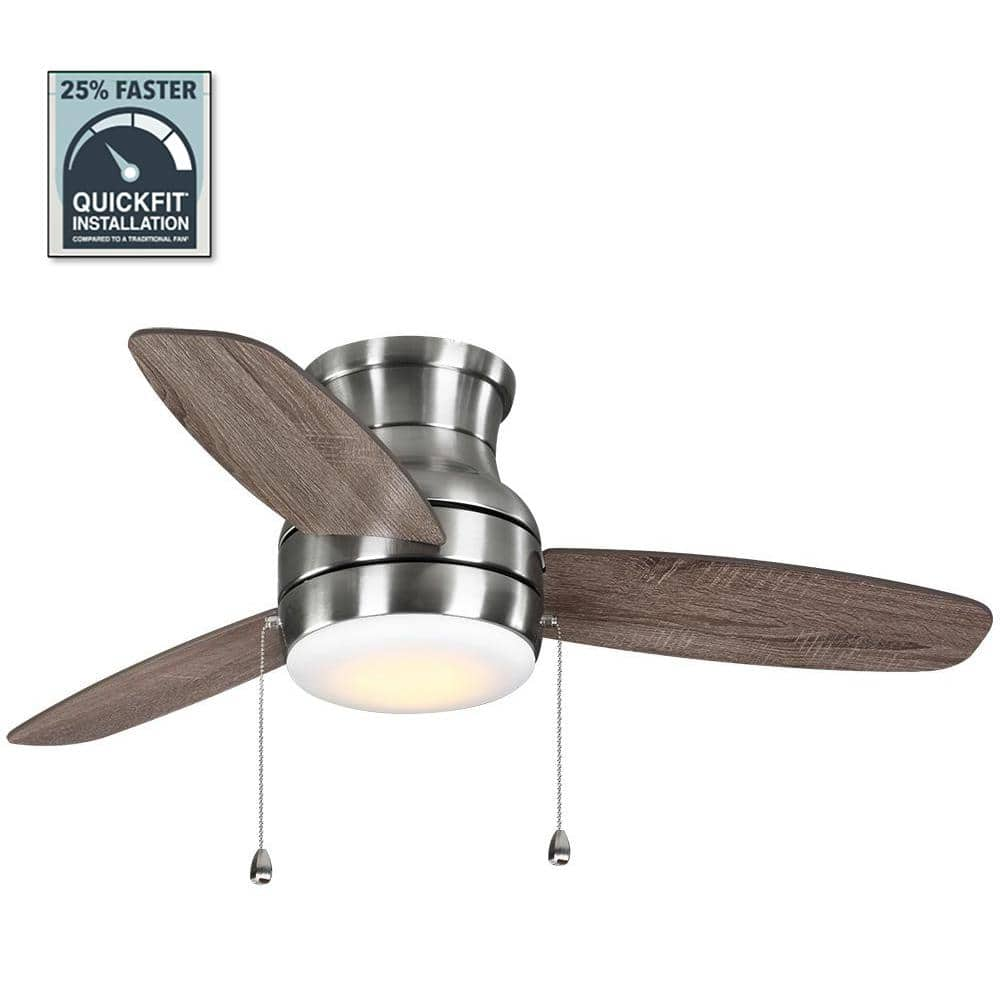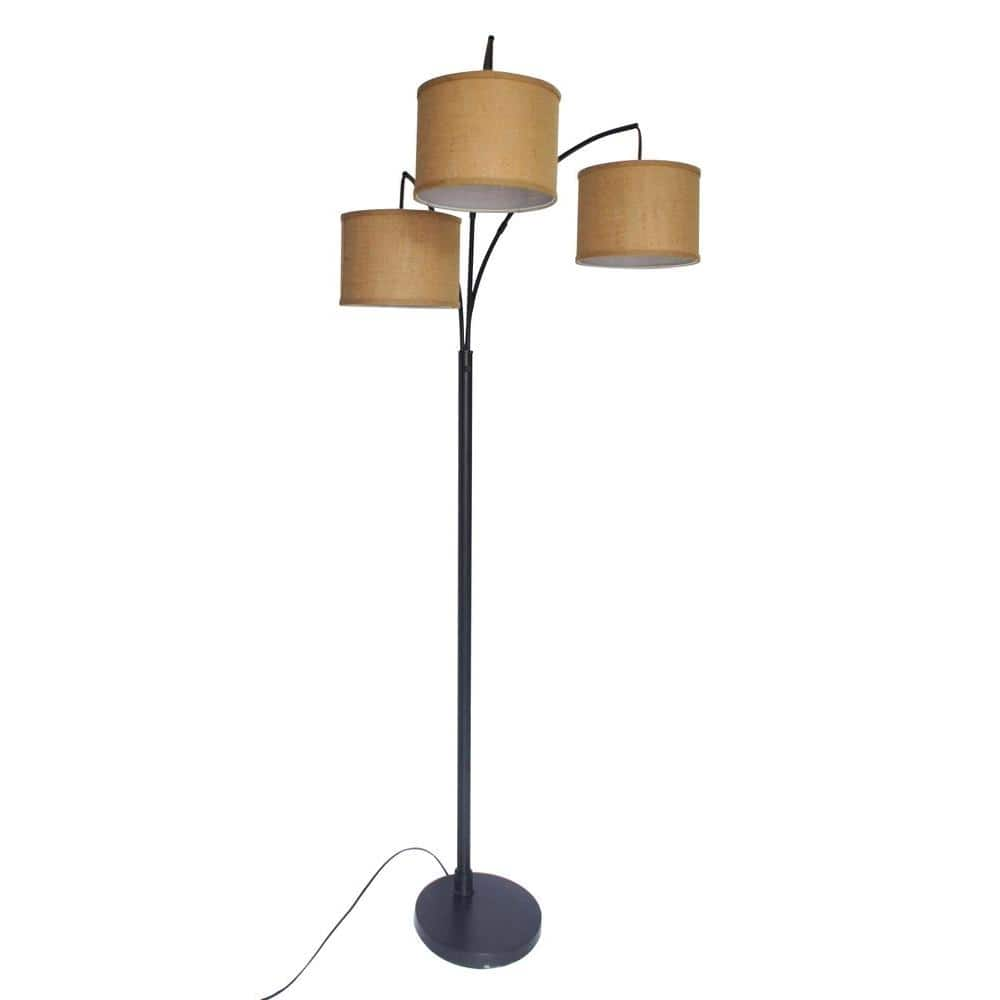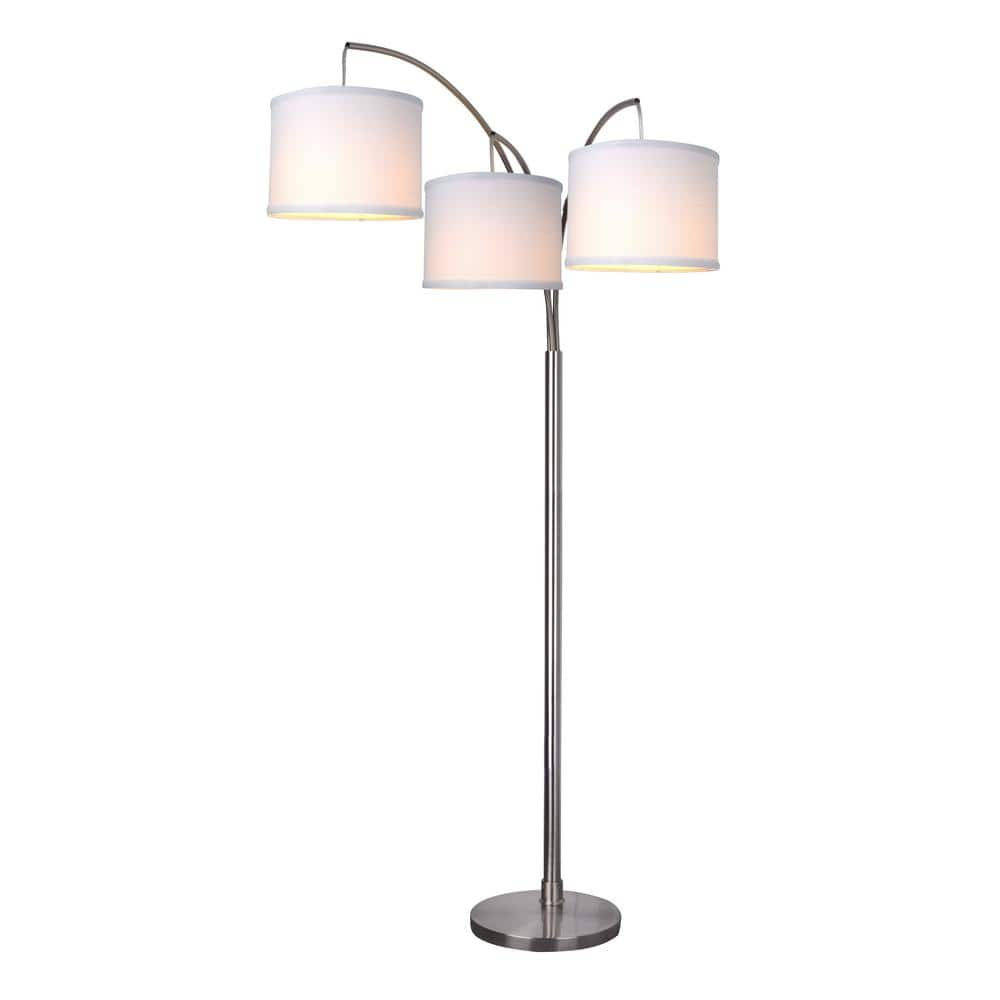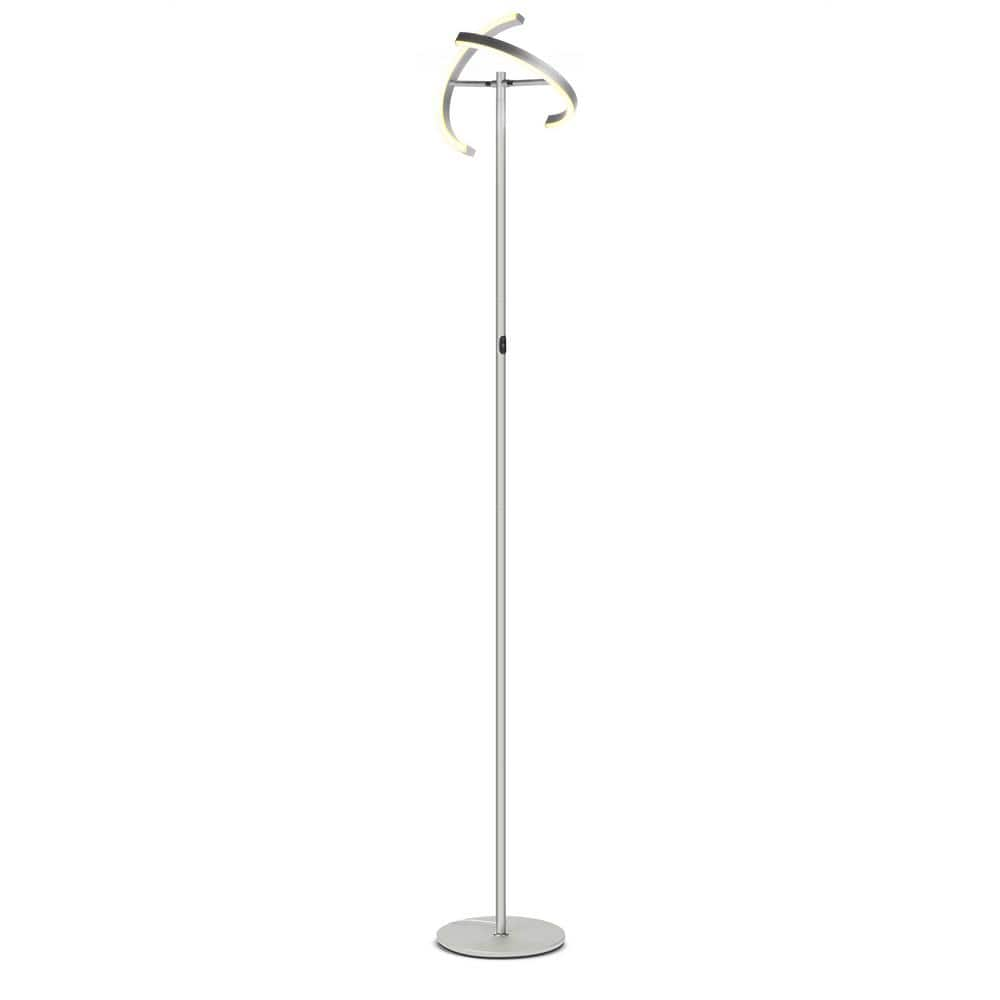Home Decorators Collection Ashby Park 44 in. White Color Changing Integrated LED Brushed Nickel Ceiling Fan with Light Kit and 3 Reversible Blades
Select warm white, soft white or daylight color temperature. Reversible gray washed oak / blackened oak blades for versatility. Integrated LED module light kit, no bulbs to replace.
The 44 in. Ashby Park ceiling fan by Home Decorators Collection combines form and function to complement your indoor living spaces. The flush mount design is perfect for rooms with low ceilings and the integrated LED light kit offers versatile lighting options. Choose from 2,700K, 3,000K or 5,000K light output options to suit your lighting needs. The fan’s beautiful brushed nickel finish is paired with three reversible blades in dark gray washed oak and blackened oak finishes to easily blend with today’s decor trends.
- Integrated 20-Watt LED module with color changing technology
- Choose from 2700K, 3,000K or 5,000K light output settings
- Brushed nickel finish
- Frosted white glass light shade
- (3) reversible blades in dark gray washed oak and blackened oak finishes
- Pull chain operation
- Powerful 3-speed reversible motor
- Flush mount installation is perfect for rooms with low ceilings
- Slide-on mounting bracket for easy installation
- Lifetime motor warranty
- Finishes shown are representative of the item. Actual finish may vary slightly.
Additional information
| Dimensions | H 11.67 in, W 44 in, D 44 in |
|---|---|
| Fan Blade Length (in.) | 19.2 |
| Fan Blade Span (in.) | 44 |
| Fan Blade Width (in.) | 6.7 |
| Certifications and Listings | EPA Approved, EPA Approved, UL Certified |
| Manufacturer Warranty | Lifetime Motor Warranty |






by Jay
It works quite well and fit for rather small room.
by Chad
great fan replaced an older fan that was 20 years old. new fan moves more air and We are very happy.
by Carol
Great fan light — modern and look great in the rooms. Purchased two.
by Quaye
Relatively easy to install. Most difficulties were dealing with the small screws. Absolutely super quiet!
by Anthony
This smaller fan was a perfect fit for a room 12×14. Installation was straightforward, and took about 40min.